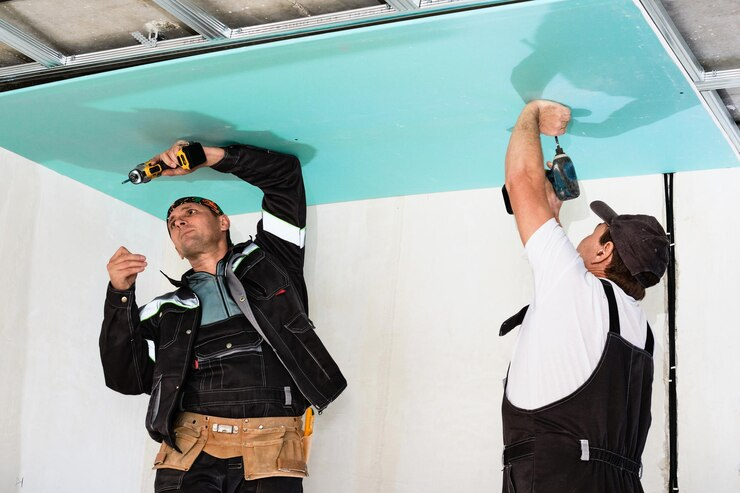Painting a ceiling significantly alters the appearance of a home and contributes to the overall appeal and perceived worth of the home. In general, any ceiling refreshment process—whether it’s a transformation of an outdated design or repairing the damage done—is a delicate process that needs to be thoroughly thought through and carefully completed.
In this guide, check out some recommended steps to follow in order to transform your ceiling effectively and safely.
Following the steps described above, you will be able to get a perfect outcome without encountering pivotal mistakes.
Planning and Preparation
Therefore, recognizing the various forms of ceiling transformation and their applications requires a considerable amount of planning and preparation before any project is carried out. First, check the state of your ceiling and what shape it is in; there may be certain structural problems that should be solved first.
This is especially true if you are working on old houses where ceilings may have endured numerous cycles of use.
Removing Old Ceiling Materials
One of the most common tasks in a ceiling transformation is the removal of outdated or damaged materials. Popcorn ceiling removal is a popular renovation choice as these textured ceilings can make a room look dated.
However, removal can be messy and, in older homes, may involve asbestos, requiring professional handling. Ensure you wear appropriate protective gear, such as masks and goggles, and follow proper safety protocols to avoid inhaling dust or debris.
Repairing and Reinforcing the Structure
After stripping the old material and scraping, check the substrate for any signs of deterioration or compromise. Fill in any cracks, gaps, or water stains, cleaning and preparing the surface as the correct base on which to install a new ceiling.
Strengthening could be required to the extent that it may help improve the building structure, which may be outdated. They ensure that your new ceiling will be not only beautiful but also durable and can last for a long period of time.
Installing New Ceiling Features
After preparing the surface, it’s time to install new ceiling features. Whether you’re adding decorative elements, new lighting, or modern finishes, ensure that all installations are done correctly and safely.
Building supply windows can be an excellent addition, providing natural light and enhancing the room’s ambiance. Ensure that any electrical work complies with local codes and is performed by a qualified electrician.
Finishing Touches and Cleanup
The last task that one will undertake when dealing with the ceiling transformation process is the final touches and the cleaning process. Select paint or finishes from reputable brands that will blend well with other materials that you intend to use.
There are times when applying a coat of primer before painting will be of much benefit since it will enable the painting to have a smooth surface. Make sure that you clean from the borders up to the corners to get the best and neatest appearance.
Ensuring Safety Throughout the Project
First of all, safety should be kept in mind when making any changes to your ceiling. This encompasses the wearing of proper protective equipment like gloves, masks, and sight protectors during specific activities that involve sanding, painting, or stripping of previous layers.
Inspect all the tools and equipment; make sure they are in good order and utilized according to the manufacturer’s instructions. If using ladders or scaffolding, follow proper safety guidelines to prevent falls or injuries.


Comments are closed.